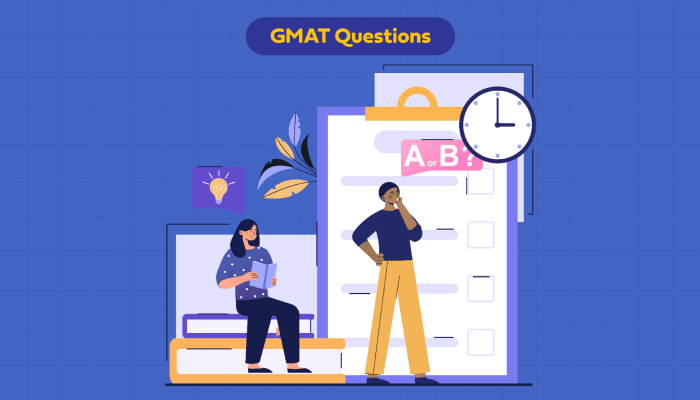The GMAT exam is a globally acknowledged standardized test which is considered as a benchmark for admission into coveted graduate management programs around the world. Taking the GMAT exam is also your gateway to achieving your business school aspirations and therefore, is considered to be an accurate predictor of academic success. Consequently, it tests if the candidates are adequately equipped with skills that are relevant to succeeding in business and management endeavours.

If you are planning to take the GMAT exam, it is imperative that you try your hand at solving GMAT sample questions beforehand. It is even more effective if you inculcate the practice of solving question papers on a regular basis, much in advance before the day of the actual exam. This habit not only reinforces your learning and fosters a sense of confidence but also ensures that you are not caught off-guard as you traverse the various GMAT question types through the course of the examination.
Purchasing the GMAT Official Guide is a worthwhile investment if you are planning to start your GMAT prep. It gives you access to an abundance of GMAT practice questions. There are also many other popular GMAT prep books available in the test preparation market that will bolster your GMAT exam preparation strategy. At the outset of your preparations, you need to familiarize yourself with the exam structure and question types. The GMAT exam entails four sections: the Verbal, Quantitative, and Integrated Reasoning sections as well as the Analytical Writing Assessment (AWA) section.
While it is a well-known fact that the GMAT exam is a computer-adaptive test, it is also interesting to note that only the Verbal and Quant sections of the exam are in fact computer-adaptive in nature. These sections utilize testing software that adapts to your performance for determining the difficulty level of the subsequent questions. In other words, the GMAT questions adjust in difficulty based on your performance. Yet another striking facet of the GMAT exam is that the GMAT exam pattern offers you flexibility in terms of selecting the section order in which you want to take the GMAT.
The GMAT exam consists of the following four sections:
- Analytical Writing Assessment
- Integrated Reasoning
- Quantitative
- Verbal
The Analytical Writing Assessment section gauges your writing and critical thinking skills. You will have to critically analyse an argument and provide your unique-yet-logical perspective on the given topic. You will be given 30 minutes to complete the essay.
In other words, the AWA section requires you to draft a well-thought-out essay in 30 minutes.
The Integrated Reasoning section, in a way, tests your ability to thrive in a data-driven, technologically advanced world. It does so by measuring your ability to analyse, decipher, and comprehend complex information that is conveyed to you in different formats. You will have 30 minutes to solve 12 questions.
The 12 Integrated Reasoning questions comprises the 4 following question types:
- Multi-Source Reasoning
- Graphics Interpretation
- Two-Part Analysis
- Table Analysis
The Quantitative Reasoning section or the Quant section, in a nutshell, tests your math skills. It measures your ability to thoroughly analyse and interpret data. It also calls for the effective utilization of your reasoning skills to draw conclusions based on the data-related or mathematical problems that are presented to you. You will have 31 questions in the section that need to be solved in 62 minutes.
The Quantitative Reasoning section consists of 31 Questions from the following question types:
- Problem Solving (PS)
- Data Sufficiency (DS)
The Verbal Reasoning section aims to gauge your ability to read and comprehend written texts, to evaluate arguments, and to identify as well as rectify errors so that the text adheres to the rules of standard written English. In this section, you will have to solve 36 questions in 65 minutes.
The Verbal Reasoning section entails 36 Questions from the following topics:
- Reading Comprehension (RC)
- Critical Reasoning (CR)
- Sentence Correction (SC)
Given below are some GMAT sample Questions and their corresponding Answers that have been specially curated by our experts here at CareerLabs to give you a taste of the real exam. Solving these GMAT questions will also help you in identifying your strengths and weaknesses. You will also be able to create your own strategy for tackling the various question types. Now that you are well-acquainted with what to expect on the day of the test, you can fully relax knowing that you are not in for any sort of surprises.










Talk to an expert?